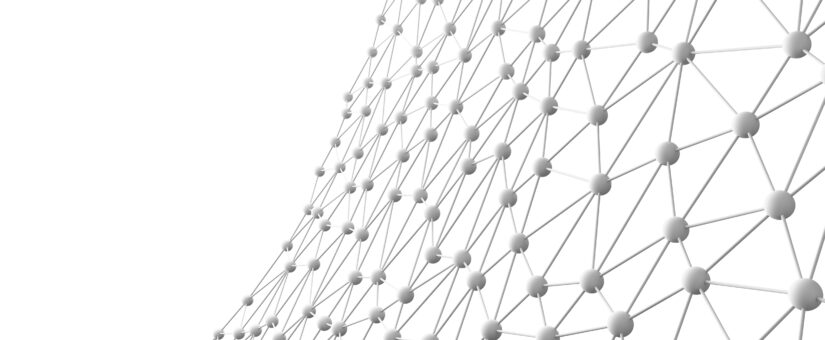
Envisioning a Real-Time Healthcare System
- Posted by Jim Jordan
- On January 25, 2022
- 0 Comments
It’s been a little over a year since the first case of COVID-19 was recorded. While communities across the globe lived through 2020 mostly in quarantine, scientists, on the other hand, were hell-bent on developing a solution to combat the problem. Simultaneously, healthcare systems have attempted to predict surges in cases to adequately prepare for care needs. As nations battled with this pandemic in its early stages, challenges surrounding significant shifts in patient’s requirements and the lag time necessary for healthcare delivery organizations (HDOs) to revamp their medical and operational capabilities threw a curveball at an already beleaguered health department. Apart from this, at COVID’s initial wave, officials attested that a relevant portion of early deaths was caused by a lack of health system preparedness and knowledge of the best care protocols, as much as the virus itself. This global health crisis has uncovered the dearth of patient population real-time intelligence and flexible health system structures, further underscoring the need to accelerate a real-time healthcare system (RTHS). Currently, COVID cases have reached a new peak in the United States, with a new strain of the virus has already sprouted inland. Considering our present circumstances, it becomes even more apparent that adopting RTHS is the ideal approach to improving care delivery– now and beyond the pandemic. As we eagerly stride down the path towards digitization, we must first understand the vision’s complexity and evaluate the progress we’ve made.
What is a Real-time Healthcare System?
A real-time healthcare system (RTHS) is a next-generation health care delivery system designed to optimize the hospital’s most critical clinical, business, and administrative workflows by ensuring easy and uninterrupted access to all the relevant data about patients. In 2015, Gartner Inc., a leading research and advisory company, described the real-time healthcare system vision as, in simpler terms, ‘a landscape where healthcare professionals will be constantly aware of what’s happening within their systems and with their patients’. RTHS translates to a complete data profile on the population served by the health system (data) and adapts its workflows (systems) to match the community’s changing needs. This creates a patient-centric environment where healthcare providers can maximize their efficiency by sharing, adopting, and applying their medical mastery in real-time. The main goal of RTHS is to anticipate demand, reduce the response time in decision making, and improve service quality. If HDOs upgrade to this more sophisticated system, they will be able to productively anticipate and streamline workflows, greatly enhancing care delivery.
Opening doors for boundless possibilities, the global implementation of RTHS became one of the many key priorities of the healthcare industry last year. Nonetheless, its success is still the subject of many heated debates; some are hopeful of its future as it’s slowly becoming an everyday reality while others demand more public-private government investment to improve its infrastructure. There are also some skeptics, claiming this endeavor to be unattainable.
Illustrating the Vision
All systems require an intentional alignment of inputs and processes to achieve standardized outputs that meet customer needs. Customer needs include consistency in meeting product or service specifications (quality) and inputs, processes, and outputs. In this case, it is necessary to standardize the inputs.
Input (fixed) + Process (fixed) = Output (fixed)
To illustrate the fixed input, process, and output production method, here’s a painting analogy. Suppose you’ve decided to buy a sage green paint color for your home. Having realized this specific need, you would probably want the paint to be available to you when you demand it (access). You would also expect color consistency between individual cans of paint (quality) and a reasonable price within its product or service class (cost). Meeting these needs requires an alignment and application of a standardized paint mixing process to achieve a consistent color. In this oversimplification, our system has a fixed pigment input going through a fixed mixing process to achieve a fixed output of paint color and quality.
Input (variable) + Process (variable) = Output (fixed)
On the contrary, what happens if inputs are variable and cannot be standardized? What if you cannot always schedule when the input arrives to enter into the process? To achieve a fixed output given the variability in inputs, we need a flexible or variable process capable of adjusting to input variability. Since demand is unknown, relevant data concerning customer preferences must be retrieved. For instance, paint manufacturers would most likely try to access existing databases to gather information on how many gallons of paint customers want, what colors or shades they like, and where they purchase their paint. Although this method seems efficient, fetching the data and systems necessary to have real-time knowledge of your market may be difficult and costly. Yet, in the case of our paint example, the absence of this data takes a financial toll by wasting inventory– both in terms of the amount needed to compensate for lag time and expired inventory that needs to be destroyed.
In a similar yet broader context, imagine that the input of paint pigment can range from light green to forest green. We would now require our mixing process to adjust itself to accommodate input variability (pigment) to achieve a standard output– sage green. To expand your imagination a little further, suppose the market now prefers mint green. The paint manufacturer may likely produce too much sage green and too little mint green due to the lag time in understanding this shift. Assuming the product spoils, there’s also a possibility that the paint manufacturer would risk discarding the sage green inventory and lose revenue as customers purchase mint green from other manufacturers.
In this paint discussion, it is reasonable to surmise that even in this context, digitization, which enables real-time knowledge of customers’ needs, can hasten the response to a changing market environment. One could also easily picture a mathematical formula to balance risk and acceptable loss to maximize profit. However, these losses are unacceptable to the healthcare system, their physicians, and their nurses. In my 25 years of experience, the great majority does not optimize for profit; they optimize for the patient. Given this notion, can a real-time healthcare system positively contribute to this healthcare problem?
Challenges
For RTHS to react to its environment, it must have data on patient history and current status. Moreover, it must be able to predict changes in demand, inclusive of disease details. To cite an example, RTHS is capable of predicting the number of heart attacks versus cancer patients that can be anticipated in a week, month, or year. For our cancer patients, it can address the types of cancers we should expect. It is important for HDOs to predict and adapt care protocols to match specific patients’ anatomical or genetic profiles. Do we treat via cancer surgery, radiation treatment, or immunotherapy?
The complexity is overwhelming to the point of paralysis; however, it is imperative that we move forward regardless of possible outcomes and begin taking necessary steps. Making this vision, a reality requires interoperability between the various systems and a common understanding of clinical terms. In addition, with the increase in mobile apps, real-time patient status must be transposed to the patient’s record for preventative action.
Since the U.S. healthcare value chain is complex, reviewing its unique administrative and reimbursement systems is advisable. (For those interested, here is a link to a presentation called Insurance, Reimbursement, and the Data it Generates).
Current Progress
Some may think that digitally transforming healthcare is an ambitious venture, but initial efforts towards this end-goal are worth acknowledging. For instance, the Healthcare Information and Management Systems Society (HIMSS) advocates for improving interoperability. They define interoperability as “the ability of health information systems to work together within and across organizational boundaries to advance the effective delivery of healthcare for individuals and communities.”
There are also numerous nonprofit and government organizations working to standardize electronic data interchanges such as HL7 International and the U.S. government’s Office of the National Coordinator for Health Information Technology – ONC. Other interoperability organizations are as follows:
- The CARIN Alliance
- The Strategic Health Information Exchange Collaborative (HIE)
- DirectTrust (HISPs)
- The Sequoia Project (nationwide interoperable health information exchange)
- The Discover Alliance (multi-sector)
Aside from non-profit and government organizations, the World Health Organization (WHO) is focused on the next International Classification of Disease (ICD) system to be designed for digitization called ICD-11. The ICD committee has partnered with SNOMED CT to integrate global clinical terminology with the ICD definitions of mortality and morbidity to standardize the language.
The use of mobile and cloud-based platforms facilitates the capture of real-time data, allowing for a focus on prevention. For example, the Philips Respironics Sleep Apnea system uploads your data to a physician dashboard so they may monitor and alter your prescription if necessary. My Apple series 6 watch tracks heartbeat and takes ECG and blood oxygen levels, which can be printed out and brought to my physician. I am confident that its integration into a future dashboard will happen eventually.
The Road Ahead
The digital components necessary in building the RTHS infrastructure must be perfectly aligned and integrated to achieve our desired result. The question is, how easy is it to reach the tipping point and disrupt the state of balance to inspire commitment to this vision? Although RTHS is now becoming every first world country’s envisioned norm, how can less economically-developed countries catch up? If part of the goal is to launch RTHS worldwide, is such a vision realistically achievable?
It is undeniable that the pandemic’s global impact, the continued evolution of interoperability, and the advent of cloud, IoT (Internet of Things), and mobile health apps have heralded a clear path towards complete digitization of the healthcare sector. There is a rugged, winding road ahead of us, but the trek will certainly be worthwhile. Only time can tell how soon we can reach our destination.



